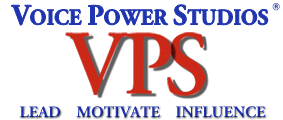Although Zoom first went public in 2013, it probably didn’t cement its presence in peoples’ overall consciousness—and their daily lives, especially their daily working lives—until the pandemic hit in early 2020. After passing its 1,000,000thuser in May 2013, by April 2020 (at the height of the coronavirus lockdown), Zoom had topped 300 million daily meeting participants—a figure it has maintained since then (and, if you’re into percentages—that lockdown bump represented an increase of 2900% from the year before).
According to Notta, an AI-powered audio transcription tool company, “Remote work,” since the pandemic (and along with other advances in technology and changes in how we work), “made virtual meetings the norm in many organizations, and video conferencing tools became more popular.” Also, according to Notta, there was this informational nugget: “Virtual meetings grew from 48% to 77% between 2020 and 2022 . . . evidence that virtual meetings have come to stay.”
So. Virtual meetings, whether they’re your thing or not, they are likely here to stay. And become even more of a staple in the worlds of business, academics and communication overall.
What’s concerning, though, for me, as a voice coach, is how long it has taken for some amount of protocol, professionalism and experience to take hold among users. (Although, not that surprising, given that it often takes a while, sometimes years, before people truly adapt to a new form of technology—or realize how to use it and use it effectively.)
Just as telling is the why behind this rise in virtual meetings. Again, according to Notta, “43% of professionals consider on-camera meetings better for productivity,” and “It is theorized that this might be connected to the fact that on-camera meetings reduce the ability of the majority of the respondents (66%) to multitask.” Perhaps even more critically apt to voice and speaking well on camera: “88% of respondents believe video meetings are suitable for training and interviews.”
And even more apropos:
- 80% of workers rely on video conferencing platforms for one-to-one meetings.
- 78% believe video conferencing is great for team meetings and stand-ups.
- Nearly 62% choose video for meetings with customers or partners.
Plus, if all that weren’t enough, according to a report by the 63rd International Meeting Statistics Report 2022 released by UIA (Union of International Organizations), the number of virtual meetings will increase 34% in the following five years.
Again: virtual meetings aren’t just here to say, they may well become the norm and something people engage in more often than in-person meetings.
And that is the subject of this blog: How to become a more effective speaker on Zoom and other virtual-meeting platforms.
And for the sake of brevity, I am going to split this blog into two parts. This first part lays down most of the facts about the growing dominance and criticality of Zoom and other virtual meeting platforms and how they represent the immediate future of meetings overall; the follow-up blog will largely be a talk I had with one of my former clients, Richard Draper, a longtime broadcast television reporter, former media manager for Intel and now the New Mexico state director for a nationwide health system nonprofit.
But first a couple of quick tips for Zoom meetings in general.
As one of my speech coach colleagues, Melanie Fox has stated, in this blog for Bold Voice, “clarity of your sound is key, [so] you want a strategy to help you minimize potential issues that could derail the delivery of your message or obstruct your ability to hear the meeting." That’s as much a technical matter as it is good advice for paying closer attention to articulating what you’re saying. Meaning: make sure the mic is on, that it’s not obstructed or clogged up in any way, that there’s no outside or distracting noises (an overly loud refrigerator, an air conditioner, a window to outside traffic, sirens, street sounds, any pets or children who might wander in or cry out unexpectedly) in whatever environment you find yourself Zooming from.
Also, take a breath before your meeting begins, and whenever your turn comes up to chime in, speak slowly. Not too slowly. But try not to rush your point, your comment, your input. Breathing, as Daniel Kingsleypoints out, and citing what Professor Stephen Porgescalls the Social Engagement System, activates your parasympathetic nervous system. This simple breathing exercise (taking air in through your nose for a count of 4, then releasing through your nose or mouth for a count of 8), as Kingsley advises, allows “you to feel more confident and also more connected with your audience.”
As for slowing things down, next time you’re on Zoom notice first just how many times other people speed up their delivery. What’s your impression of them? Nervous? Not so confident? Hard to understand what they’re actually saying as well as hard to figure out what their point is as well? That’s what happens when we speak too fast. And speaking fast is like a snowball going downhill: the faster one speaks, the more nervous that person becomes, the faster they speak, the more nervous they get, their speaking gets faster and faster.
This is where the Power of the Pause comes in. If you remember that old E.F. Hutton commercial from the 1970s (“When E.F. Hutton talks, people listen”), it’s mostly because when E.F. Hutton spoke, he spoke in a calm, measured, relaxed pace—and people hung on his every word. Slowing down your speaking brings people in; it creates a kind of magnetism. “This,” as Kingsley says of speaking more slowly, “will not only make you feel calmer and more confident – but it will also have the bonus of causing you to be perceived as more confident because confident people are not scared to take their time and space.”
Exactomundo.
And on that note I will pause—and pick up right where I left off in my next blog: Zoom Talk: How To Speak More Clearly and Confidently in Virtual Meetings, Part II.

